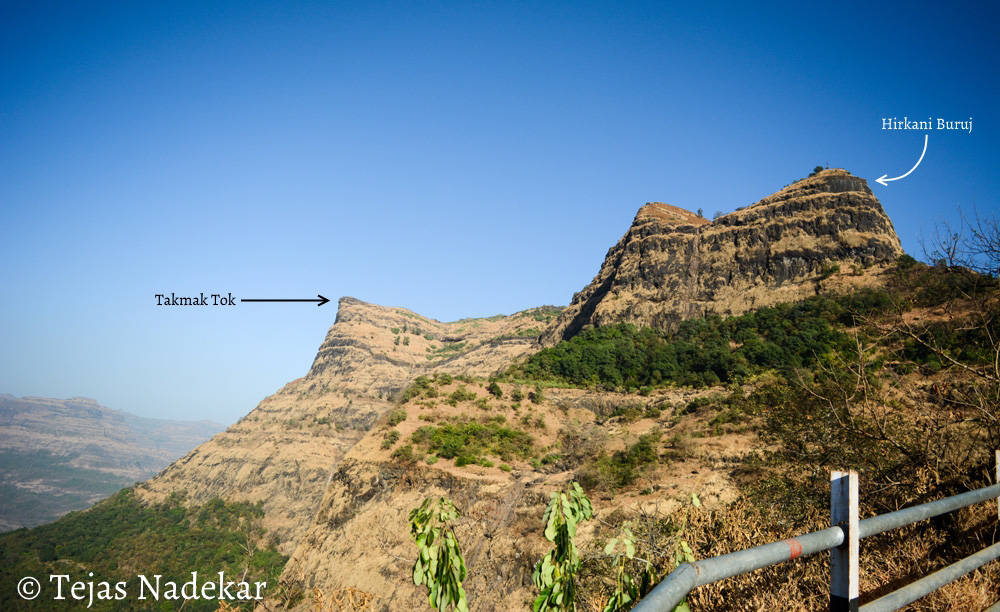
This is the second part of the Landforms & Forts series. To read Part I- Landforms, click here. (Opens in a new tab)
Part II: FORTS
Hill fort, Sea fort, Forest fort, Land fort, Watchtower or Military Base. Name it and you’ll find it in the Sahyadri!
Maharashtra is also known as the land of forts and with good reason! The vantage points provided by forts (especially Hill forts) made it easy to spot the enemy forces’ movements from afar and pre-empt any attack. But their strength was also their downfall- coveted by invading forces, they have been witnesses to the bloodiest chapters in the history of the western peninsula of India.
A conservative estimate puts the number of Sahyadri forts at greater than 350, out of which 300 have been documented in the excellent Trekshitiz website[1]. But do not let that number deceive you into thinking they were easy to build. Quite the opposite, in fact!
The fort’s architecture took into account the topography of the hills- identifying plateaus suitable for settlements, carving water cisterns at strategic places to ensure round-the-year water supply, developing possible approaches via the spurs as well as concealing escape routes in the fort walls to flee when needed. Consequently, no two forts were built alike and each one of them is a surviving blueprint of the warfare techniques prevalent then!
Building the colossal forts often required vast capital and manpower but once completed, they became the pillars on which the empire flourished.
Without further ado, let’s look at the major parts of a typical Sahyadri fort:
Shastragare/Darukothar (शाश्त्रागारे/ दारुकोठार)
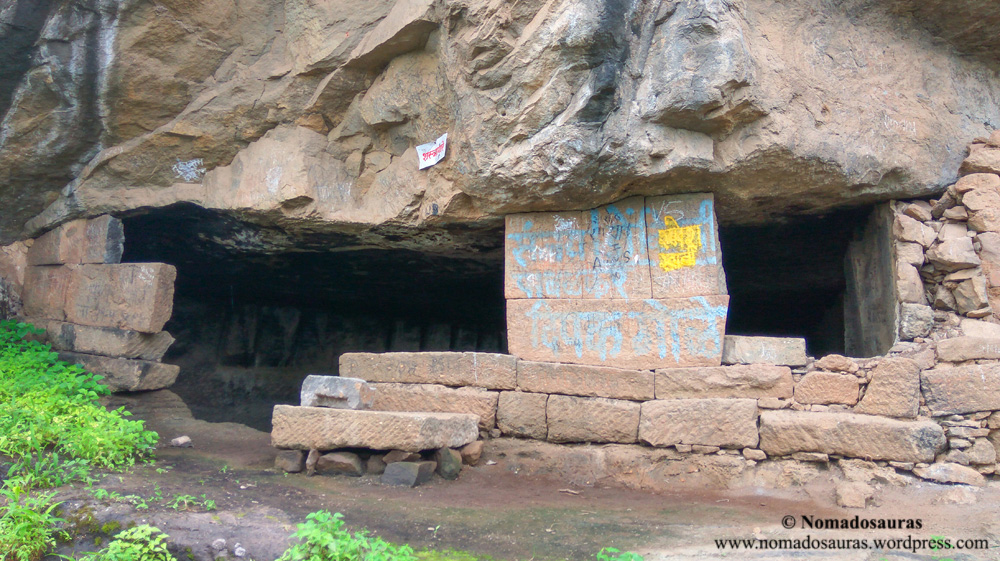
Shastragare were depots used to store arms and gun powder on the fort.
The clever Army commanders kept their gun powder dry and the weapons spic and span in the near-water tight arms depot.
After all, it spared them the Paresh Rawal’s Tejas-esque blushes in the heat of a battle 😛

Citadel (बालेकिल्ला/Balekilla)
The last line of defence in a fort, Balekillas were often built on the highest plane of the fort- complete with a granary, an administrative office and armoury of their own. No wonder they are often referred to as the fort within a fort!
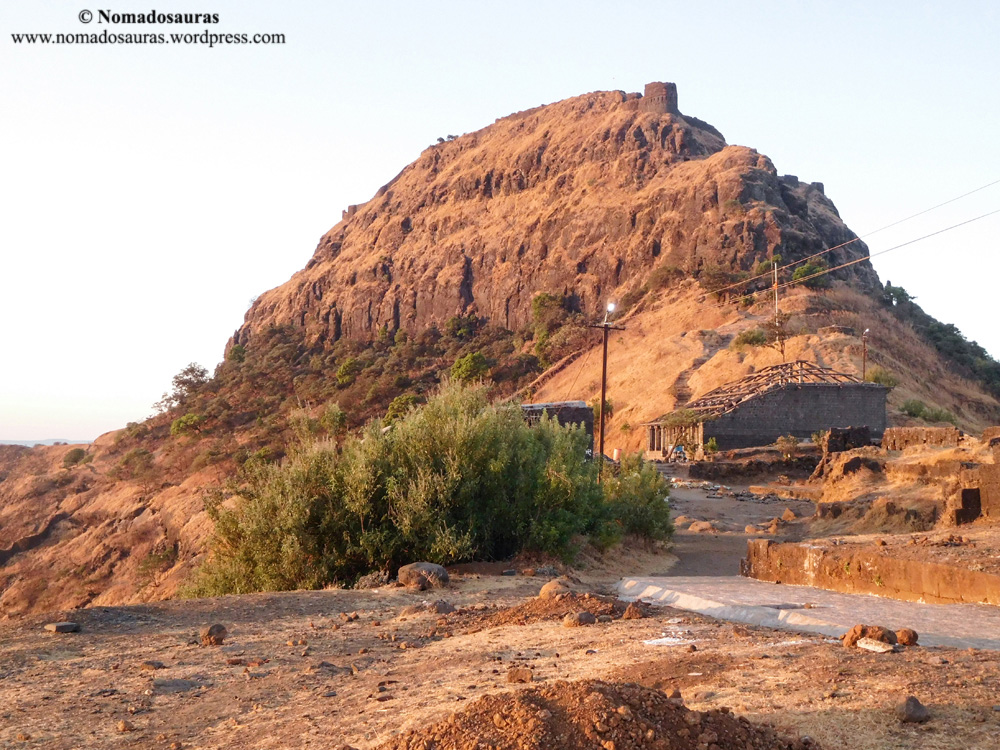
Darwaza (दरवाजा)
The only way to enter the forts. Except for Tanaji Malusare! He, along with 300 other soldiers climbed a cliff in the dead of the night to enter & subsequently win the Sinhgad fort (then known as the Kondana fort).
From the Mahadarwaza tall enough to let in Grawp, the half giant from Harry Potter to the Chor darwaza, barely high enough to let the House Elf- Dobby pass through, you’ll find the Darwaza in all shapes and sizes.

The main entrances were the second line of defence after the bastions and often adorned with spikes (to prevent the enemy forces from using Elephants to ram open the door. Or maybe to scare the hell out of enemy soldiers. Either way, they did a fine job of it!).

Even the door’s names tell a story- from the unique names derived from elements of the fort (Palkhi Darwaza, Kothi Darwaza) to the ones symbolically named after important cities/regions of that time (Dilli Darwaza, Kalyan Darwaza, Junnar Darwaza, Pune Darwaza), one doesn’t need to look any further to unearth interesting tales!

Wicket Gate (दिंडी दरवाजा/Dindi Darwaza)
A pedestrian door or gate, particularly one built into a larger door.
Flagpost (ध्वजस्तंभ/Dhvajstambh)
A flagpole was traditionally used to raise the flag of the reigning rulers of a territory. Presently most of the forts in the Sahyadri sport the ceremonial Maratha flag as a tribute to the Maratha warrior king, Shivaji Maharaj (1630-80).

Granary (अंबारखाना/Ambaarkhana)
Granaries were storehouses used for storing grains and other consumables. They were essential to surviving a prolonged siege attempt on the fort and hence the armies built massive granaries to provide for the mini-city that were the forts.
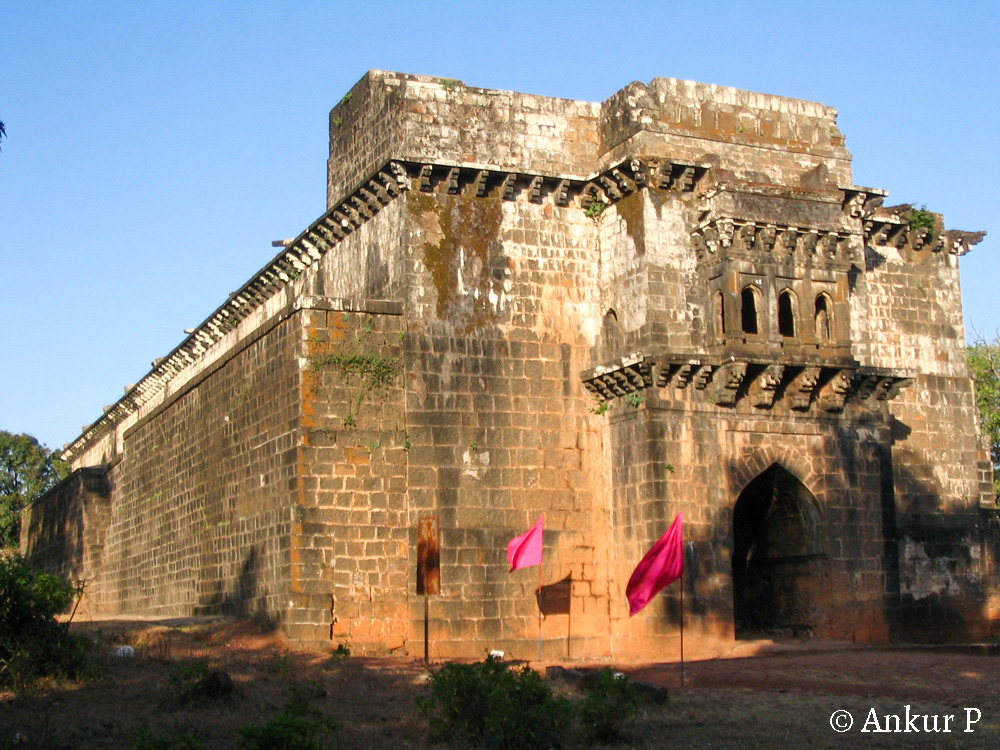
Bastion (बुरूज/Buruj)
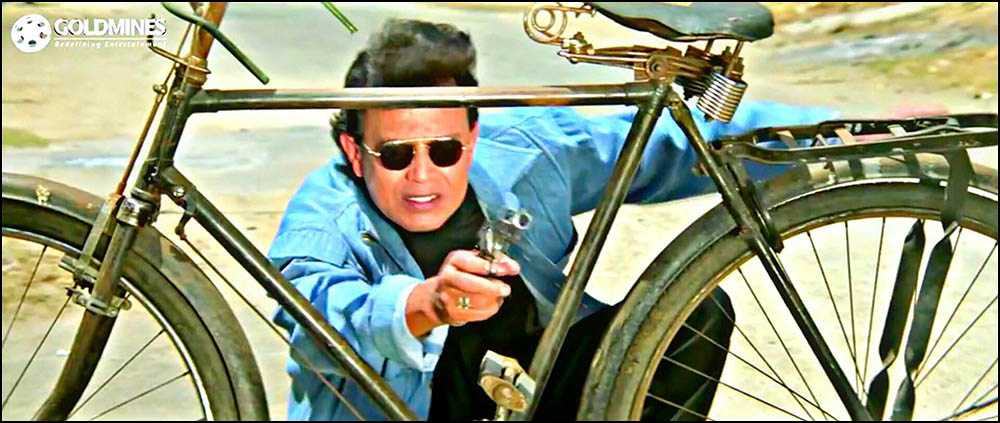
Unless you are Mithun Chakraborthy, you would want more than a cycle for cover when the enemies are raining you with arrows and spears.
This is where a Bastion comes in!
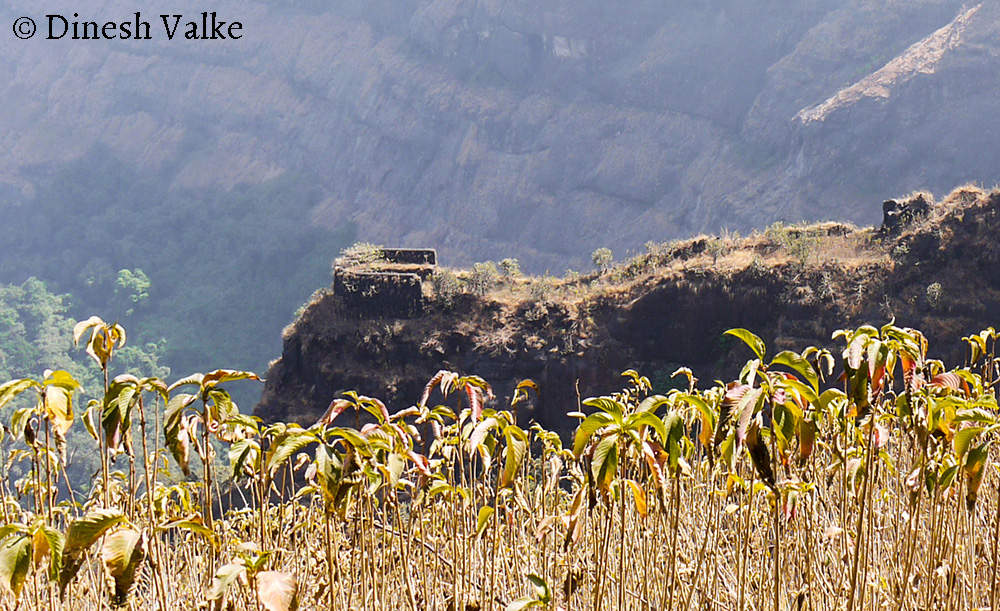
Bastions are the projecting part (usually semi-circular) of a fort built at an angle to the line of a wall, so as to allow defensive fire in several directions.

An aerial look at the undefeated Janjira fort, which had 26 (twenty-six!) bastions will tell you that ‘more the merrier’ seems to have been the mantra back in the days! 😛
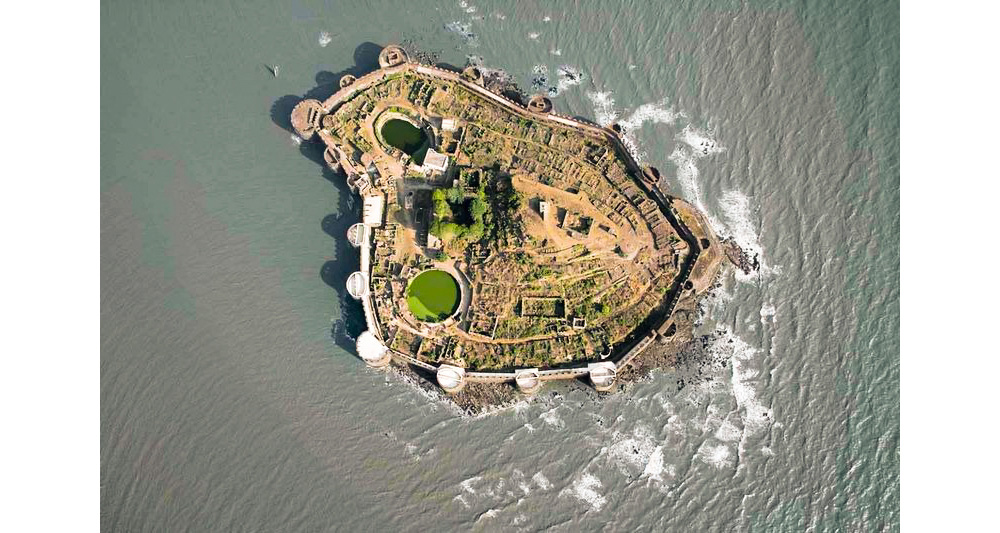
Machi (माची)
Machi were fortified plateaus or spurs used for settlement or patrolling, respectively.
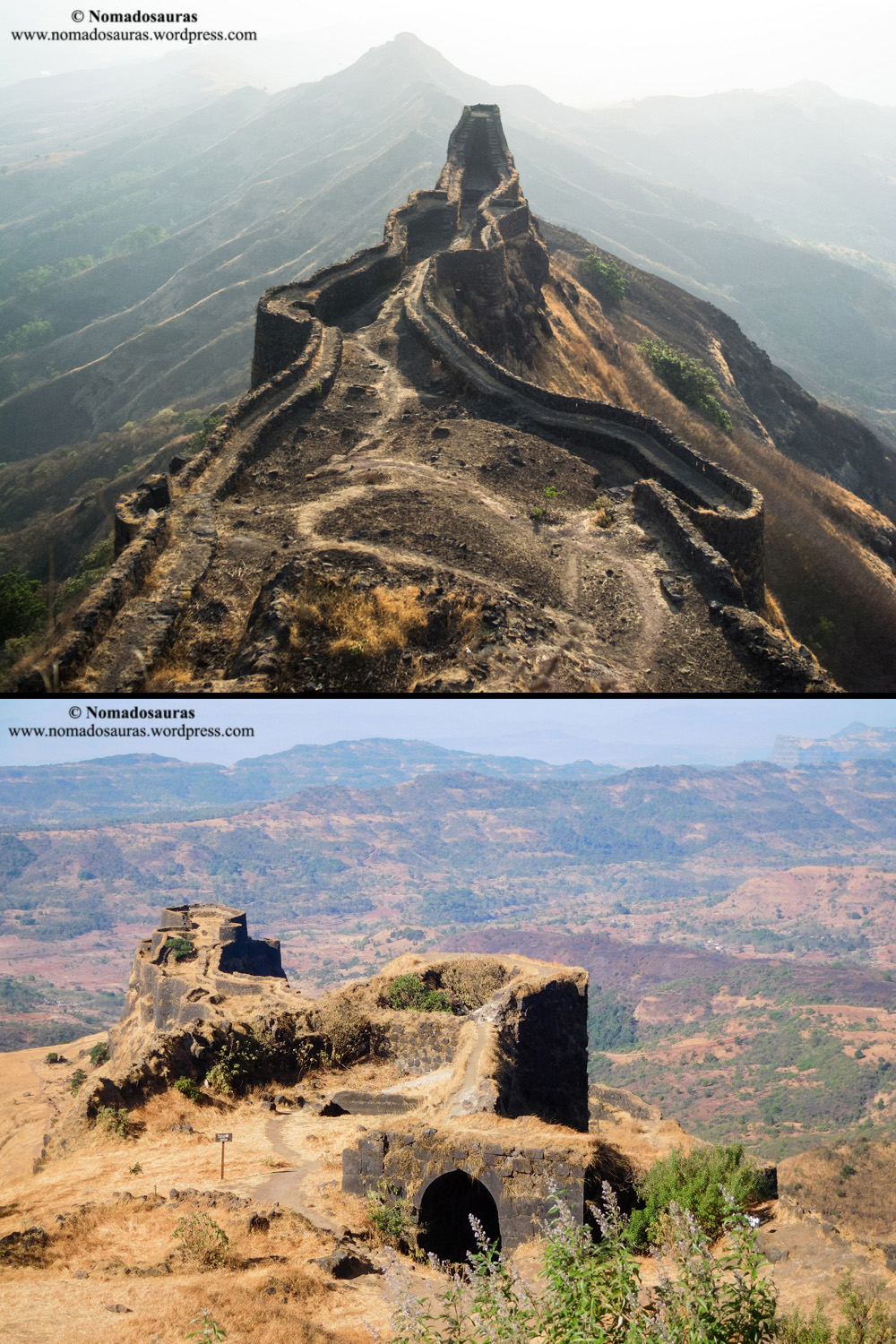
Moats/Ditches (खंडक/Khandak)
Moats were deep trenches dug around the periphery of a fort & filled with water that acted as an additional line of defence.
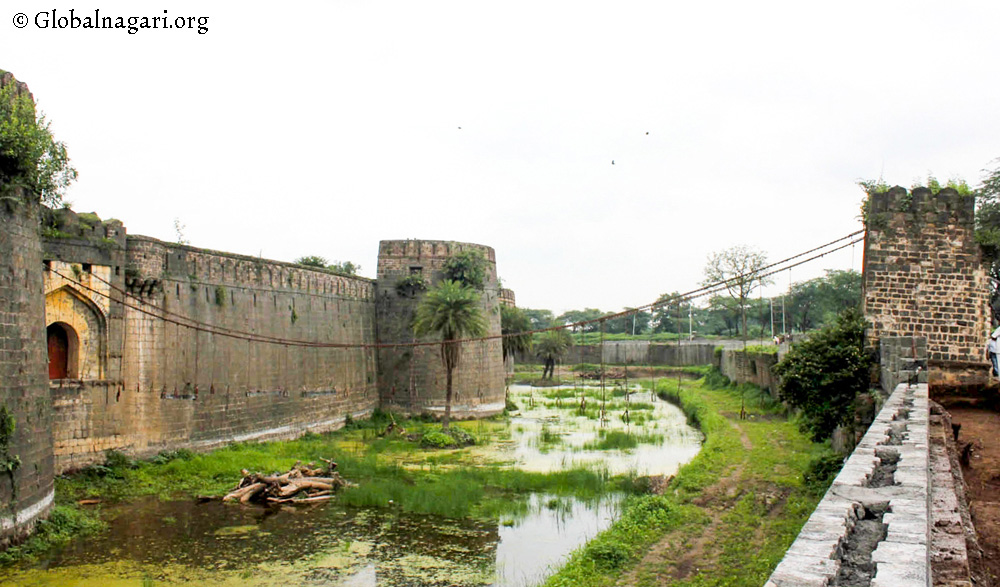
By some accounts, the moats would often be infested by poisonous snakes and crocodiles to prevent enemies from swimming over to the fort walls when the bridges had been withdrawn. I haven’t been able to verify this, though. So take it with a pinch of salt.
Naagarkhana (नागरखाना)
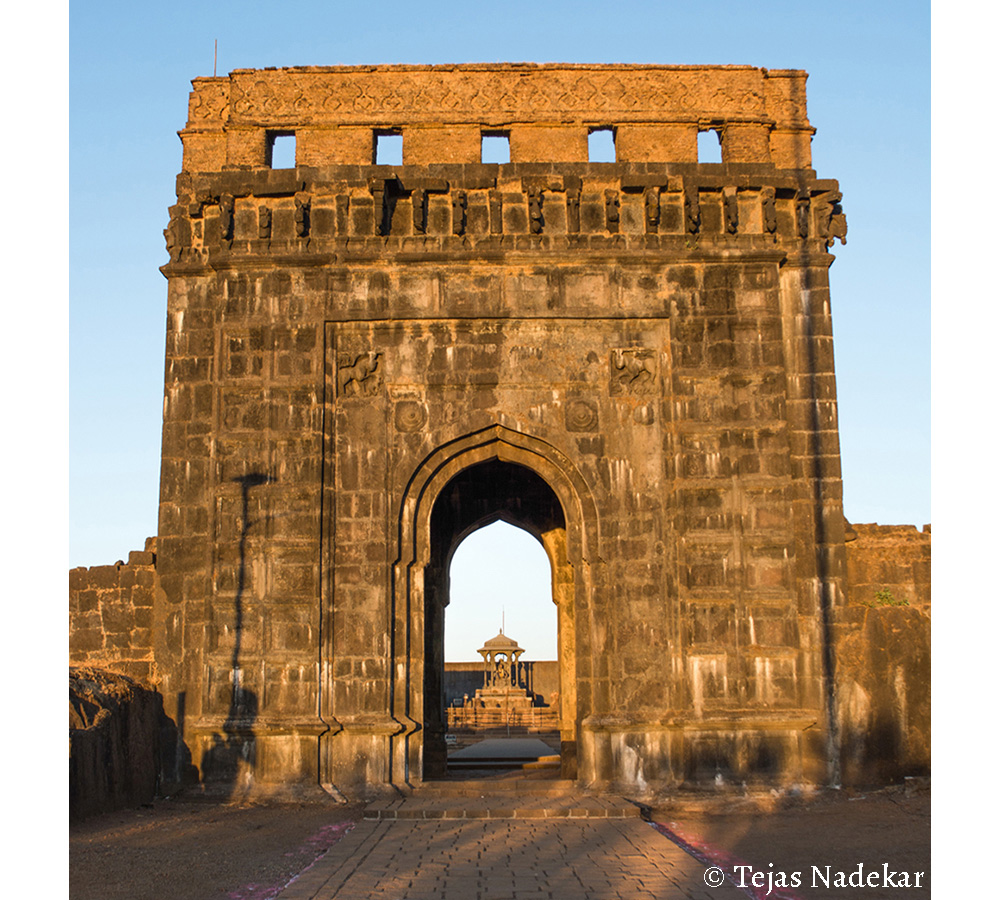
Naagarkhana or Drum houses were essentially watch-posts built inside the fort. They were also used to draw the attention of the people inside/around the fort using drums, whenever needed.
Palace (राजवाडा/Rajwada)
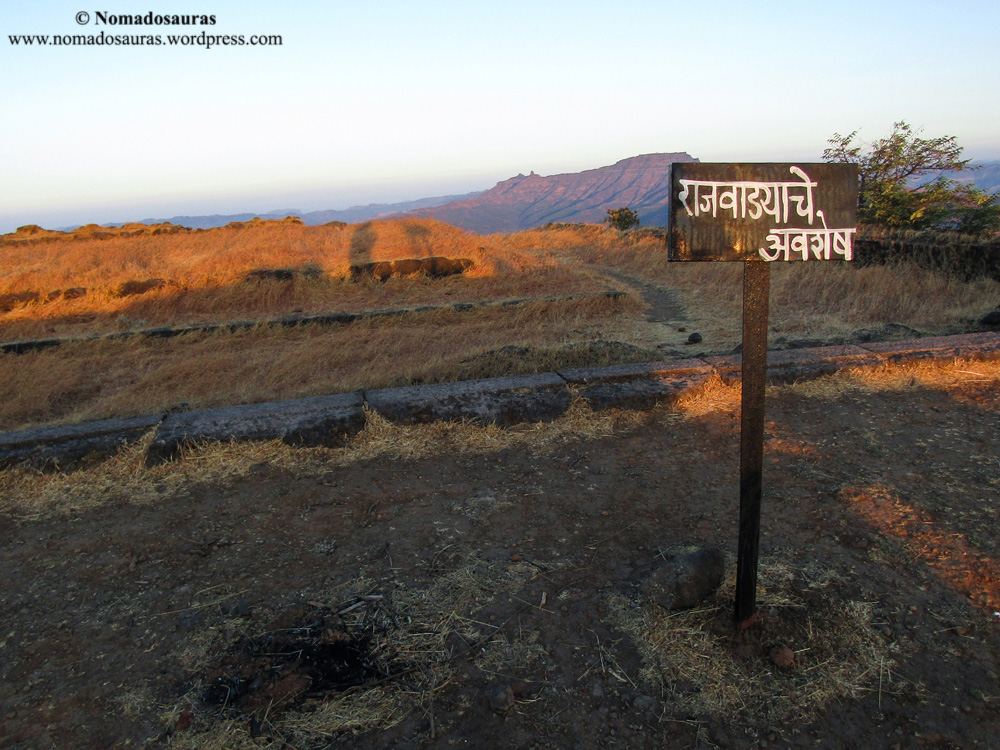
Probably the most spacious structure on the fort in its heydays, Rajwada was the place of residence for the members of the Royal family.
The biggest Rajwades have crumbled under the nature’s fury and all that remains is their foundation or the base layer of the walls but a few smaller ones remain intact.
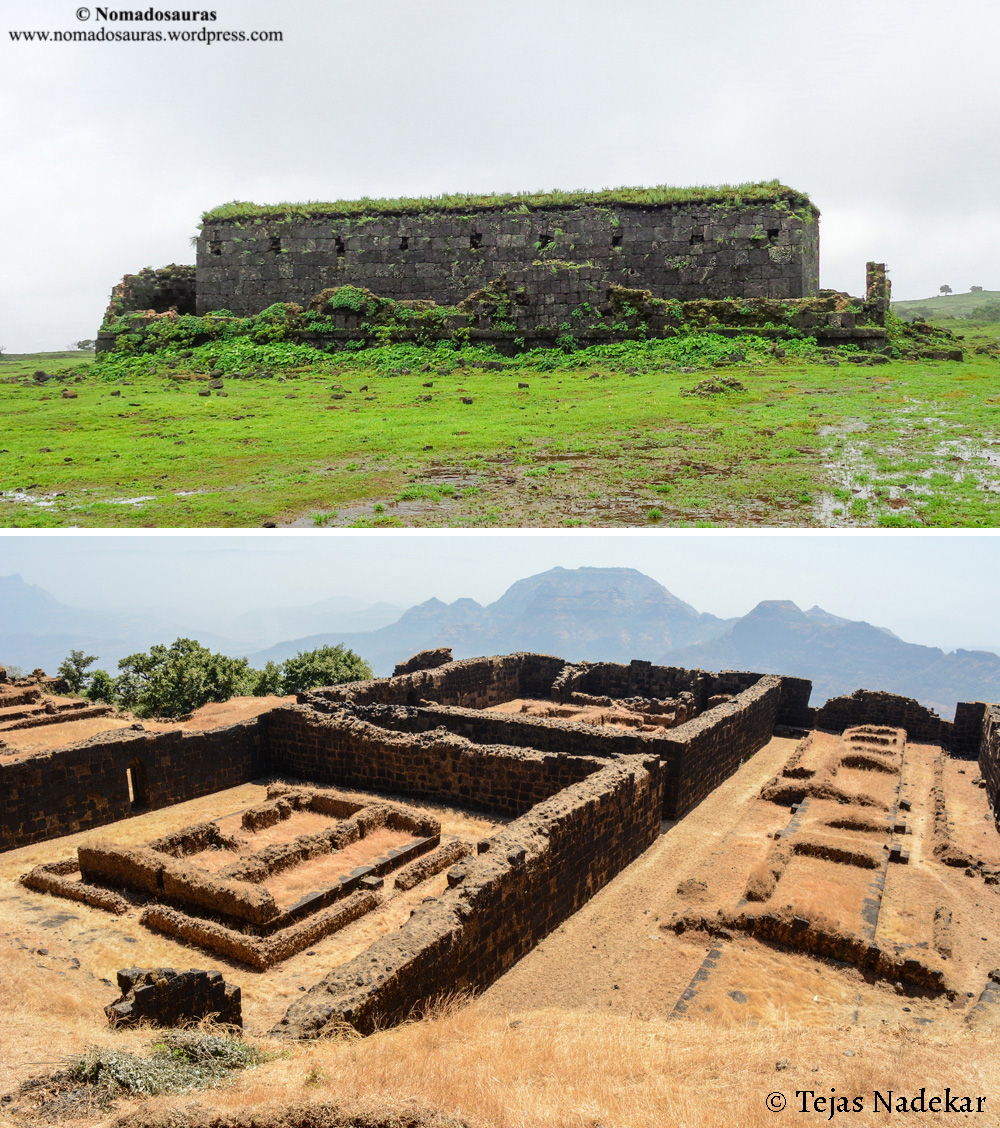
Places of Worship

The armies had soldiers and generals from every faith and religion and hence, almost every fort in the Sahyadri shows signs of multiple places of worship including Temple, Mosques and in the case of Portuguese forts, churches as well!
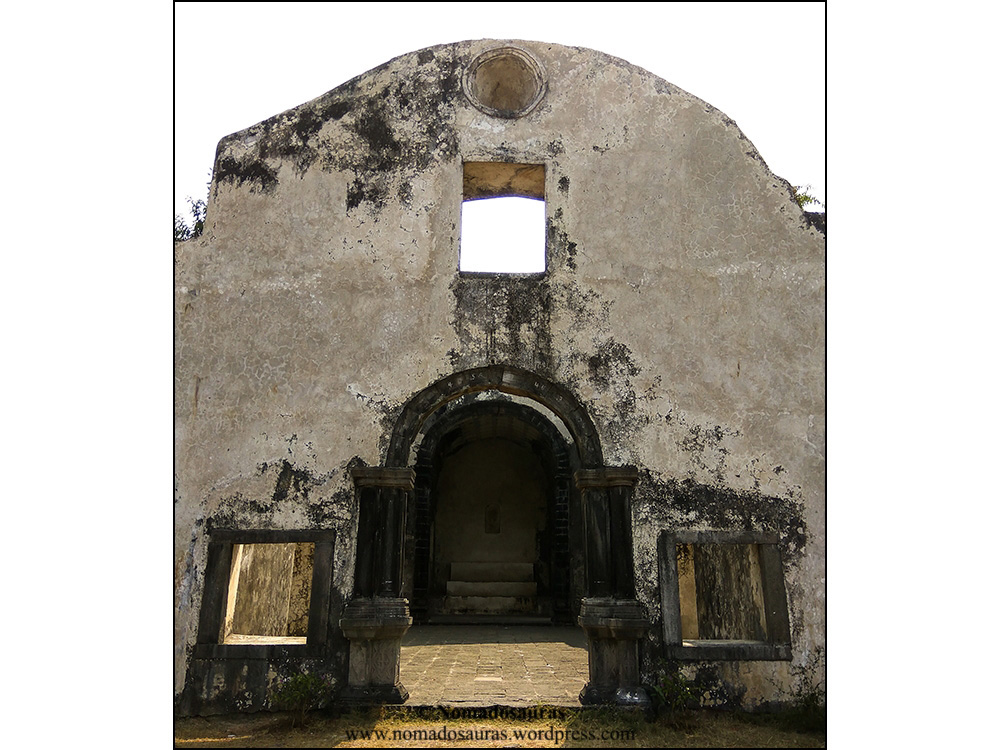
Pond (तळ)
A pond is a body of standing water on the fort, either natural or artificial, that is usually smaller than a lake.
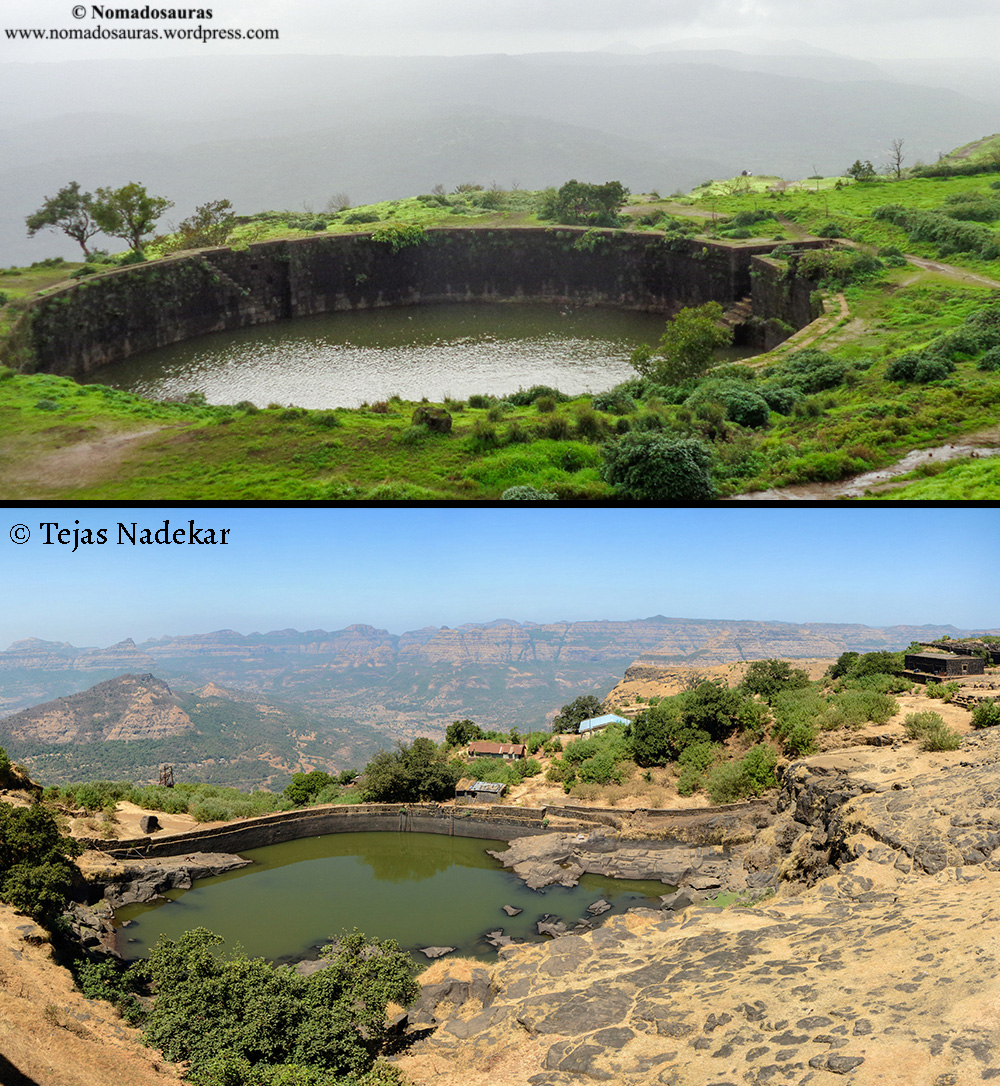
Rampart (तटबंदी/Tatbandi)
Ramparts are the defensive wall of the forts with a stone parapet on top. Most of Sahyadri fort’s ramparts sport a walkway broad enough to let 1 or 2 people pass each other without resorting to acrobatic poses.
One also comes across a few instances where ramparts were built as a double wall to incorporate secret passageways and dead ends so as to trap enemy soldiers unfamiliar with the fort.

Rock Cut Step
A lot of forts were built atop treacherous cliffs and the only way to reach them was by a single path carved into the cliff. Steps were hewn out of sheer rock to help negotiate the more dangerous sections but they were purposely carved in a steep, uneven manner to prevent attacking soldiers from building any rhythm over the steps. This enabled even small holding forces to withstand attacks until reinforcements arrived.
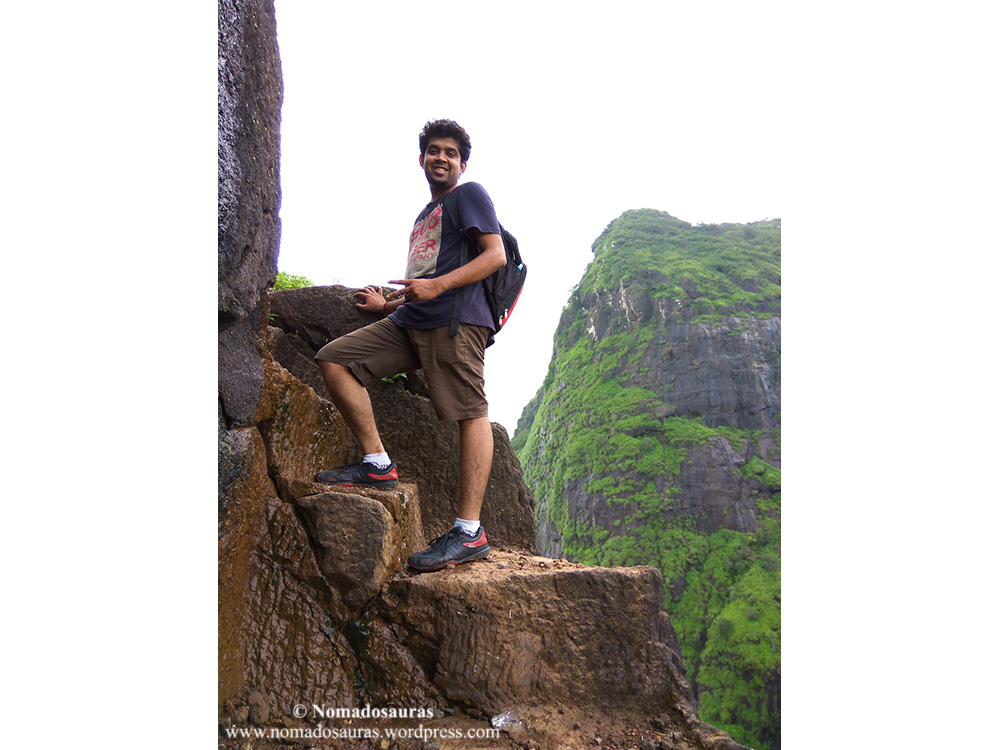
Unfortunately, most of the forts in the Sahyadri had their approach steps partially/completely demolished by the East India Company in the early 19th century to prevent rebels from using them as a base in their war against the British Empire. This has led to a few forts being rendered inaccessible and others, restricted to people with rock climbing equipment.
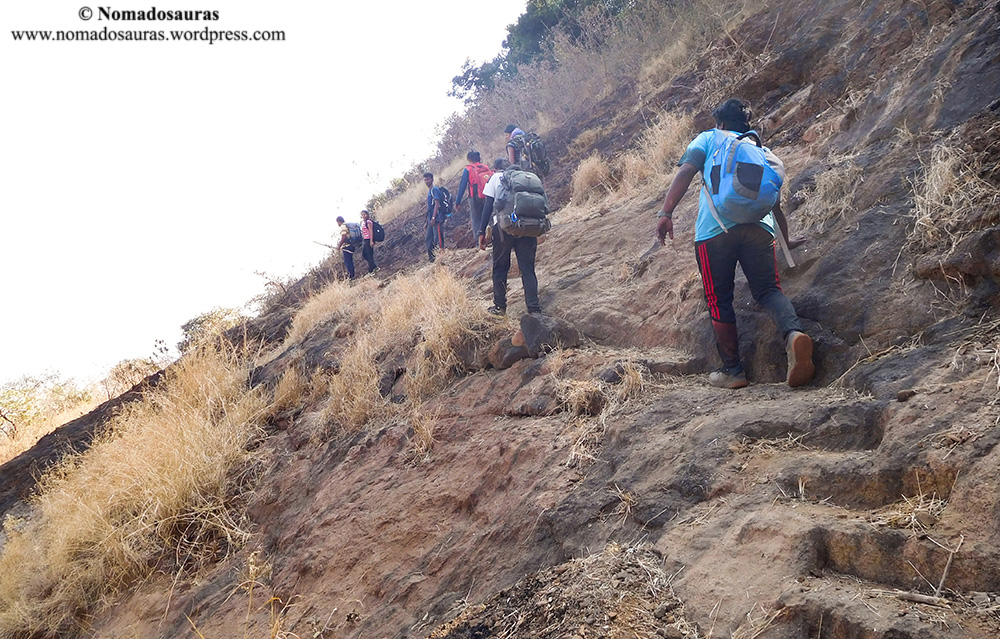
Tunnel (भुयार/Bhuyar)
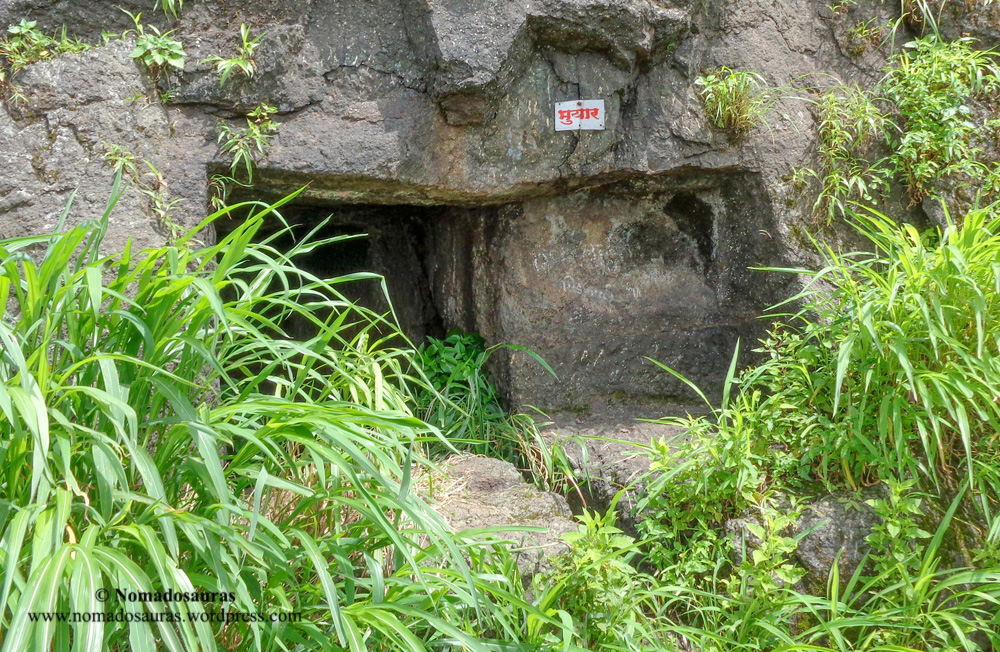
The typical Sahyadri tunnel was a tiny passageway carved in a rocky structure. The motives were varied though- providing an escape route from the fort to the surrounding region (Fort George, Mumbai) or connecting a fort and its watchtower (Prabalgad-Kalavantin) and to provide access to an underground storage facility (Vikatgad). Unfortunately, neglect has led to most of the tunnels being permanently blocked at one or both the ends.
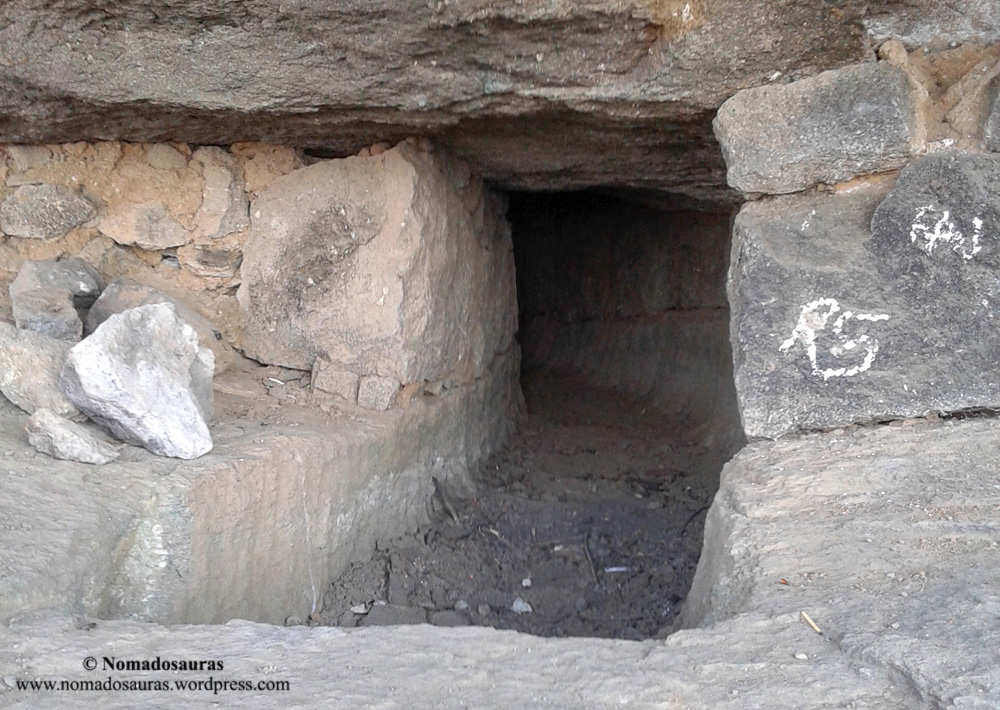
Note: Trekkers are cautioned against exploring undocumented tunnels in the vicinity of a fort as they may be susceptible to collapsing.
Village/Hamlet (गाव / वाडी)
Small cluster of homes (wadi) often cropped up near the forts in the fertile valleys and foothills of the Sahyadri range and also doubled up as watch posts. Their job was to warn the fort’s guards and prevent them being blindsided by invading forces.
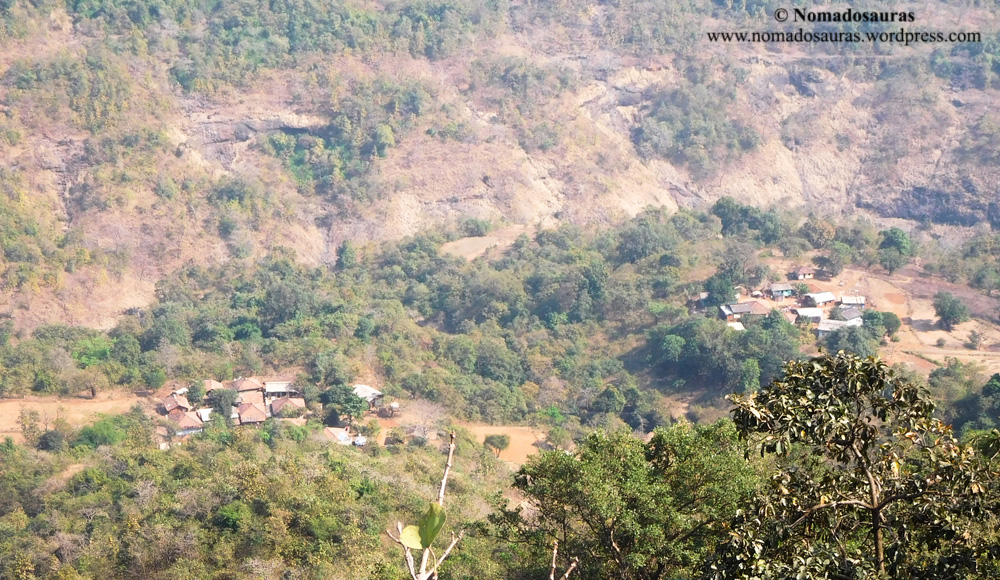
Watchtower
A watchtower is a type of fortification built primarily for military purposes and to provide a high, safe place from which a sentinel or guard may observe the surrounding area.
eg: Irshalgad/Kothaligad/Kalavantin
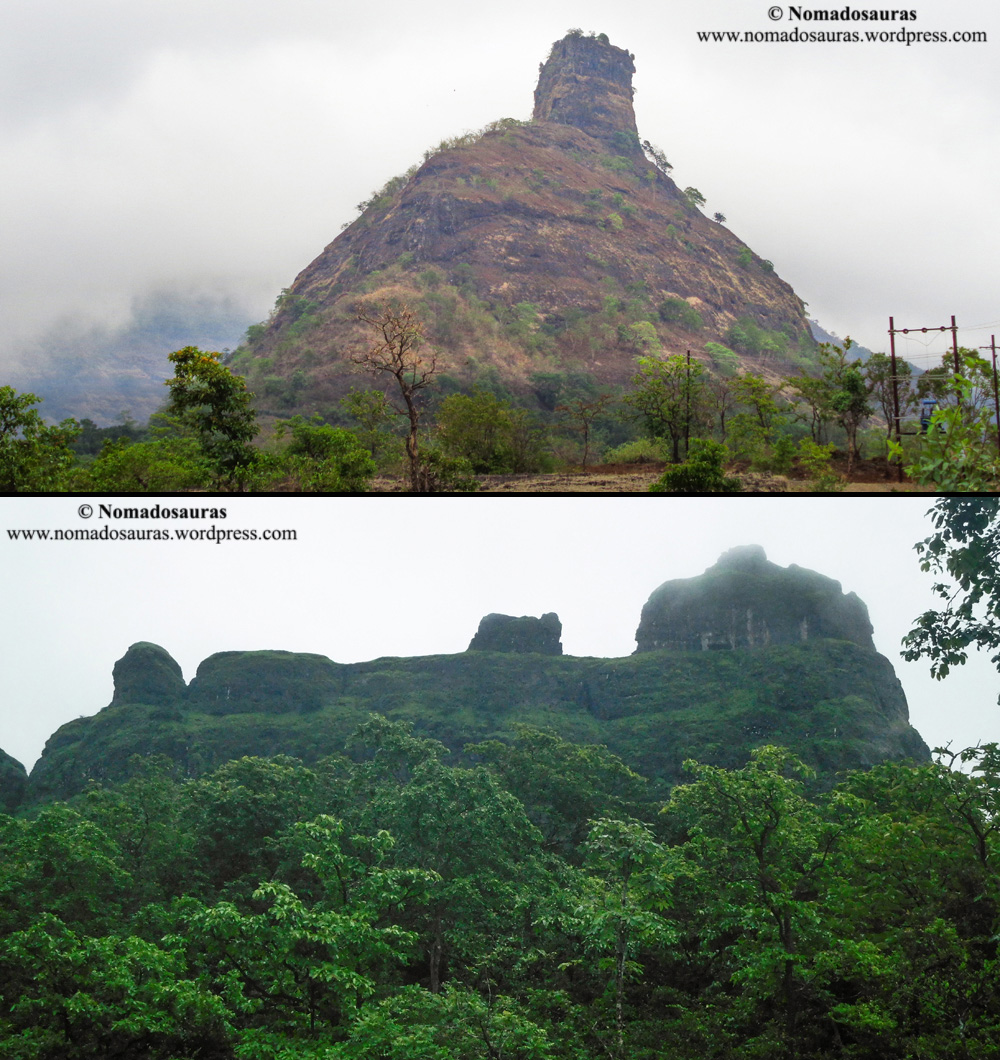
Water Cistern (पाण्याची टाकी/ Panyachi Taaki)
Water cisterns in the Sahyadri were carved in sheer rock to catch and store rainwater for the purpose of drinking and other uses all year round.

A careful look at the way forts were constructed will put today’s civil planners to shame. The rainwater management was eons ahead of its time. Networks of cascading water tanks carved in an incline to make sure the excess runoff from the highest cisterns filled up the lower ones!

Ranging from the gigantic water tanks at Visapur to the miniscule cisterns near the Chanderi fort, you ‘ll find one in almost every fort.
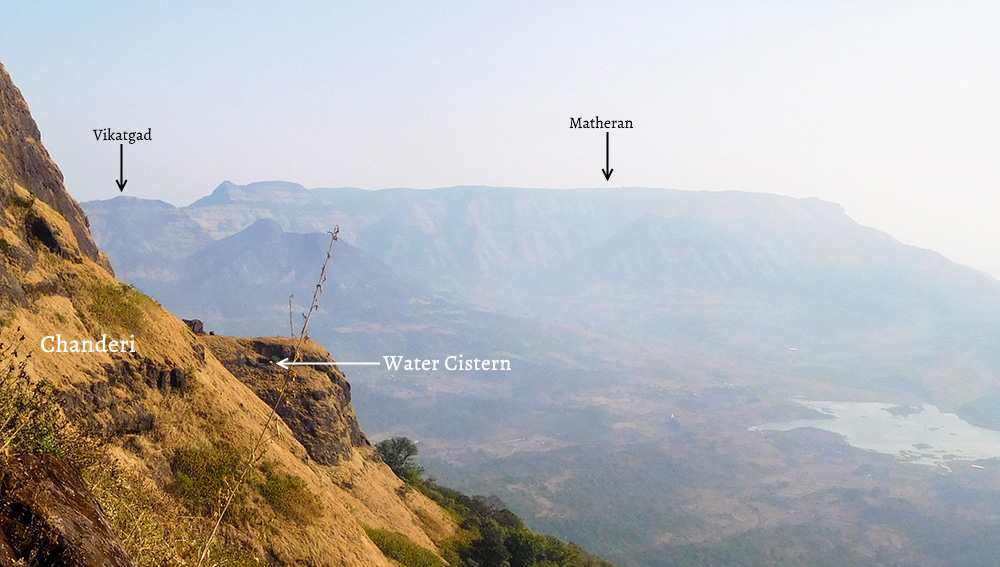
Can’t see the Water cistern? Let’s zoom in!
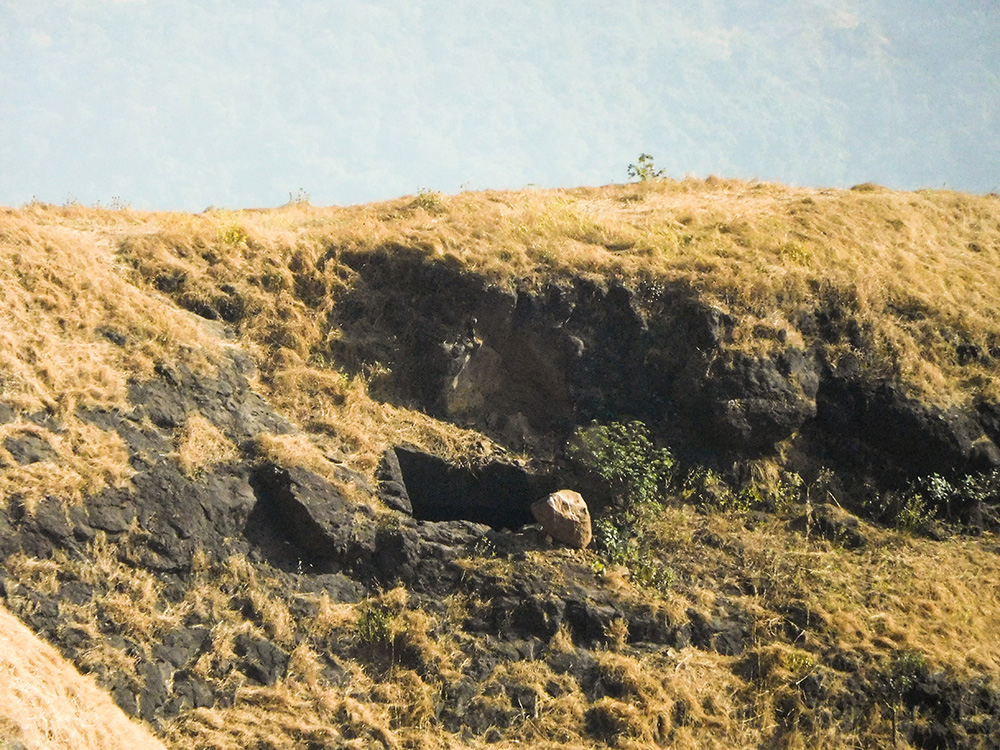
Infact the existence of a water tank is a very reliable differentiator (in case of no surviving fortification) between a fort and a normal hill.
Note: Most of the water tanks on forts have been rendered useless by natural siltation and irresponsible littering by people visiting the forts. Not only is this unfortunate but it is also contributing to the slow death of self-sufficient trekking in the Sahyadris with people undertaking range treks forced to rely on vendors near the forts for drinking water.
Do the environment and your future generations a favour- Do not litter.
I hope the next time you plan a visit to any one of these forts, you’d be tempted to check its layout and a bit of its (hopefully storied) history as well. Not only does it add another dimension to the treks, but it also leaves one awestruck at the sheer expertise & effort that helped transform these mere hills into impregnable strongholds!
Cheers & Happy Trekking!
Picture credits:
Tejas Nadek’s Flickr Album
Dinesh Valke’s Flickr Album
Ankur P’s Flickr Album
Ahmednagar Tourism
References:
[1]: Trekshitiz Website
General references:
संगाती सह्याद्रीचा (1995) – Young Zingaroo Trekkers group
Matheran – A Mountaineering Manual- Dr. Mehta, Mrs. Mehta, Ms. Mahajan.
http://marathachronicles.blogspot.in
All rights reserved © 2016 – present Nomadosauras.
Content (including images) not for reproduction in any form, partial or otherwise.
Read complete disclaimer- Terms Of Use.
Cheers!
Keep Trekking
Wow!!!
Great job!
Like all the moments and experiences you had, came together in joy like in a play, to complete this story..
The still untrodden lands somehow seem familiar to me after reading your posts.. 😀
I enjoyed all the humour references and I take with me some new perspectives!
Cheers!
LikeLiked by 2 people
Thanks a lot Ramya! I am delighted to know that you liked the post 😀
The untrodden lands of Sahyadri await you and your new perspectives! Come immortalise them in your beautiful poems! 🙂
Cheers!
LikeLiked by 3 people
These forts are definitely a marvel of engineering and a lesson for us on civil engineering.
LikeLiked by 2 people
Absolutely! Conceiving and constructing such complex forts back in the days must have required ingenious thought and unparalleled skills of engineering!
Thank you for reading and commenting!
Cheers!
LikeLiked by 2 people
Great job in detailing out everything one can spot on the fort. Very useful. Appreciate your efforts.
LikeLiked by 1 person
Thank you so much Gunjan! 🙂
LikeLike
I actually liked the Bollywood references. This post is full of knowledge. Thanks for sharing.
LikeLiked by 1 person
Thank you so much, Avyukta! I am glad you found it useful 🙂
Cheers!
LikeLike
So nice Trecking infromation you have given,thank you sir
LikeLiked by 1 person
Thank you so much, Vijay 🙂
LikeLike